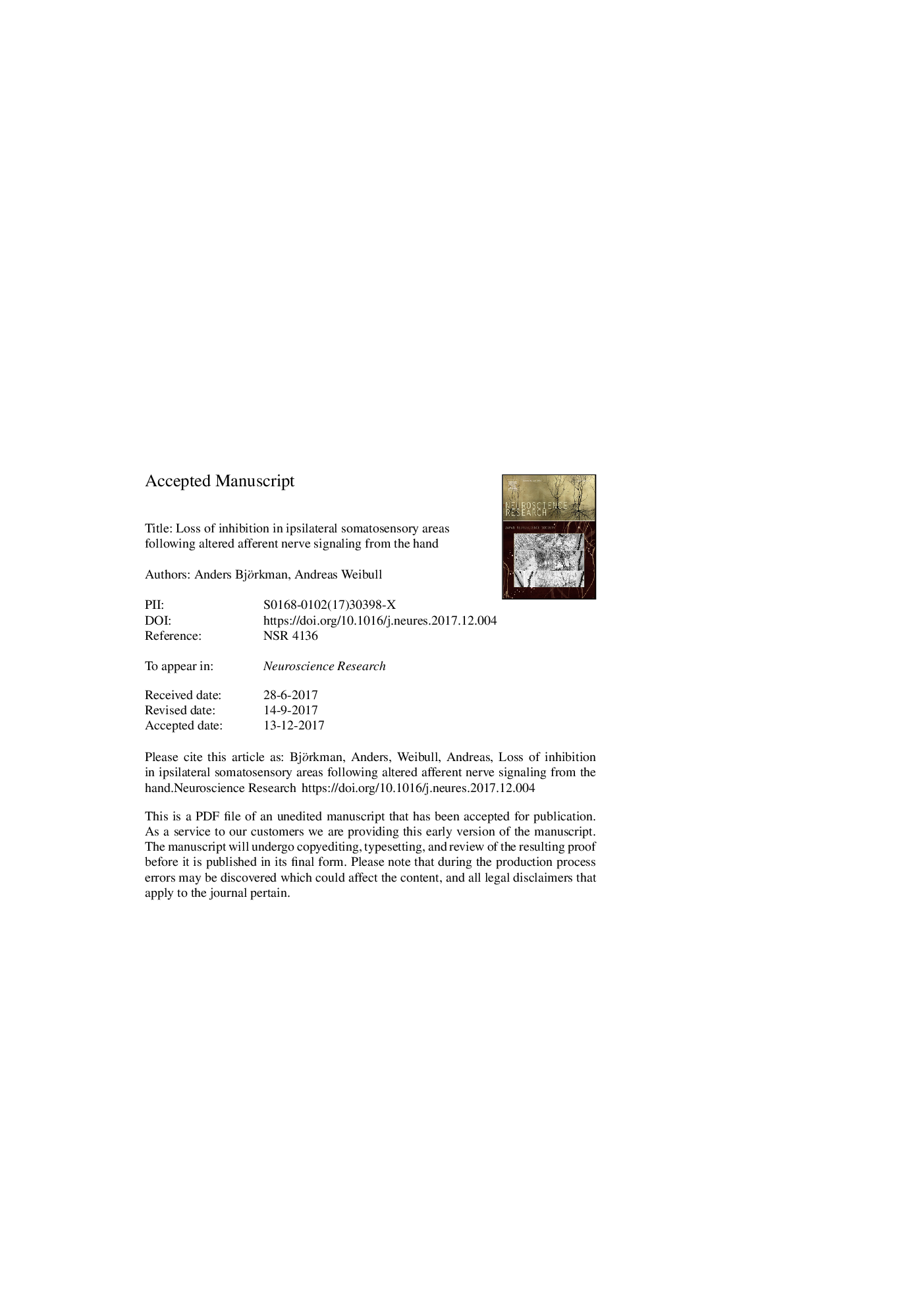| Article ID | Journal | Published Year | Pages | File Type |
|---|---|---|---|---|
| 8965852 | Neuroscience Research | 2018 | 18 Pages |
Abstract
The aim of this study was to assess changes in neural activity in the S1 bilaterally, with a focus on the ipsilateral hemisphere, following altered afferent nerve signaling from the hand. Three cohorts, all with altered afferent nerve signaling from the hand, participated in the study. There were: 18 patients with traumatic median nerve injury, 10 patients with vibration induced neuropathy and 11 healthy subjects who had their dominant hand and wrist immobilized for 72â¯h. In addition, 36 healthy subjects were included as controls. Each subject was examined using functional magnetic resonance imaging at 3â¯T. All three study cohorts showed enlarged activation in the contralateral S1 during tactile stimulation compared to healthy controls. Moreover, inhibition of the ipsilateral S1 was significantly decreased or completely lost. Thus, somatosensory areas of both hemispheres respond to changed afferent nerve signaling from the hand. The loss of inhibition of neurons in the ipsilateral S1 suggests an important role of the ipsilateral hemisphere in the cerebral adaptation following a change in afferent nerve signaling.
Keywords
Related Topics
Life Sciences
Neuroscience
Neuroscience (General)
Authors
Anders Björkman, Andreas Weibull,
